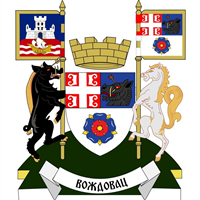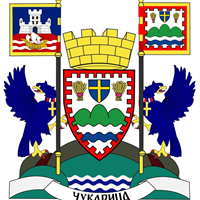Stari Grad | Belgrade Neighborhoods Names
- Nikola Igračev
- 6 min
- 25 April 2022.
- Entertainment
The central urban and historical core of Belgrade and the area from which our capital city began to expand intensively in all directions over 150 years ago is represented by the municipality of Stari Grad.
As the second smallest municipality in Belgrade, it covers an area of only 7 square kilometers. However, it houses the largest part of Belgrade's rich history, as one of the oldest European cities. Therefore, it's not surprising that the name of this municipality was established in the 1950s.
Like all other municipalities in Belgrade, Stari Grad is divided into smaller and larger neighborhoods and districts, whose names and extent are well known, as they represent the busiest parts of the city. However, the origins of the names of certain neighborhoods will surprise many.
Andrićev Venac
Across from the so-called "London," between Kralja Milana Street and Pionirski Park, stretches the complex of the Old and New Palace, with a beautifully landscaped garden between the two representative buildings. This square is called Andrićev Venac and represents a picturesque and architecturally harmonious entity in the city center. It is named after our famous Nobel laureate, who spent a good part of his life in this area, at the address Andrićev Venac 8 (today), where his Memorial Museum is also located.
London
The well-known intersection of Kneza Miloša and Kralja Milana Streets, along with its immediate surroundings, has been called "London" for over a century and a half. In 1873, the hotel of the same name was built on the western corner of the mentioned intersection. Due to its proximity to the National Assembly, foreign diplomats and officials visiting the Kingdom of Serbia often stayed there. Interestingly, at that time, the "London" hotel served as the eastern gateway to urban Belgrade. As the capital expanded rapidly, the cityscape and the purpose of the hotel changed over time. After World War II, the "London" was converted into a tavern and restaurant, then into a nightclub, and in the early 1990s, it housed a branch of the infamous Dafiment Bank. In recent decades, the building of "London" has been used as a casino, followed by a winery, and today it serves as a retail chain store called IDEA London.
Terazije
Alongside Knez-Mihailova, Terazije is probably the most famous street in Belgrade and synonymous with the city center. Recognizable for the renowned Terazije Fountain, the "Moskva" and "Balkan" hotels, it has been the main city meeting point and the center of social life in the capital for over a century. Stretching from the Old Palace to the "Albanija" Palace, Terazije encompasses a much broader concept than just the street itself. It includes the square in front of "Moskva" with its nearby park, numerous underground and overground passages (Bezistan), making it a distinctive part of the city even for first-time visitors to Belgrade. The unusual name of Belgrade's most famous area originates from the Turkish period when the then rulers built a tower, a kind of water tower, at the location of today's Terazije Fountain. Since the Turks referred to such towers as "terazije," the name became established for the surrounding area and has survived to this day.
Skadarlija
Formerly a separate municipality encompassing an area of about 20 streets, Skadarlija is now primarily associated with the triangle formed by Skadarska, Cetinjska, and Zetska streets. It is a traditional bohemian quarter that has inspired numerous writers, painters, actors, and musicians for over a century. Today, along with Kalemegdan, it is probably the most attractive tourist destination in Belgrade, where the spirit of old Belgrade taverns still lives on. The name of the quarter derives from its main street, which in turn derives its name from Skadar - a city on the shore of the eponymous lake in present-day Albania. Skadar was a part of the Serbian medieval state on multiple occasions and is the subject of famous epic poems.
Kopitareva Gradina
Probably the most elegant part of Stari Grad is bordered by Cetinjska, Hilandarska, Džorža Vašingtona, and Bulevar despota Stefana streets. With its uniform architecture and authentic ambiance, this part of the city exudes a harmony uncommon for Belgrade. Formerly known as Mitropolitova Bašta (after the estate of Metropolitan Mihailo Jovanović), this area took on the name Kopitareva Gradina in the 1920s, after Jernej Kopitar, a collaborator of Vuk Karadžić in the Serbian language and script reform. At the beginning of the last century, influential figures in Belgrade, such as the eminent scientist Jovan Cvijić, writer and physician Dr. Laza Lazarević, politician and philologist Ljubomir Stojanović, and others, built their houses in this neighborhood according to the designs of the greatest Serbian architects.
Jevremovac
In the immediate vicinity of Kopitareva Gradina, between Milan Kašanin, Dalmatinska, Takovska, Vojvode Dobrnjca streets, and Bulevar despota Stefana, lies undoubtedly the most beautiful and naturally diverse park in urban Belgrade - the "Jevremovac" Botanical Garden. It was established in 1874 at the initiative of biologist Josif Pančić and with the approval of King Milan Obrenović, as the first (and still the only) botanical park in the country. It is named after Gospodar Jevrem Obrenović, the grandfather of King Milan, who left this land as an inheritance to his grandson.
Kosančićev Venac
Like Terazije, Kosančićev Venac represents much more than just a street today. In a broader sense, this toponym refers to the old part of Belgrade, bordered by Kneza Sime Markovića, Pop Lukina, Fruškogorska, and Kosančićev Venac streets. In recent years, this part of the city has regained its former splendor through facade reconstructions and cobblestone pavements, becoming one of the most attractive residential areas in Stari Grad, equally appealing to tourists. It is named after Kosančić Ivan, a legendary Serbian knight who died in the Battle of Kosovo.
Topličin Venac
Topličin Venac is separated from Kosančićev Venac by Pop Lukina Street. It is a small square with the recently renovated Park of Vojvoda Vuk in its central part. The neighborhood where the central pedestrian zone begins is named after another medieval Serbian knight, Toplica Milan.
Both of these "venacs," together with Obilićev Venac and the streets Carice Milice, Pop Lukina, and Maršala Birjuzova, were once part of a unique area known as Varoš-kapija, one of the gates through which people entered the city of Belgrade until the mid-19th century (at the location of today's Pop Lukina Street). Varoš-kapija was demolished in 1862, but its name lives on among the longtime residents of this part of Belgrade to this day.
- How Belgrade Neighborhoods Got Their Names | Savski Venac
- How Belgrade Neighborhoods Got Their Names | Vračar
- How Belgrade Neighborhoods Got Their Names | Palilula
Kalemegdan
The largest and most famous park in Belgrade, situated on a limestone ridge at the confluence of the Sava and Danube rivers, represents the true heart of the city and the place where it originally emerged thousands of years ago. Its central part is the Belgrade Fortress, the greatest tourist attraction in Belgrade and a culturally and historically significant monument for understanding the city's evolution. Divided into the Upper and Lower Town, or Great and Little Kalemegdan, this park is an absolute symbol of Belgrade. Although not a typical neighborhood, it is definitely a part of the city that cannot be overlooked in this story. Despite its millennia-old history, its current name, like most Belgrade toponyms, has its roots in the Turkish language – kale (fortress) + megdan (battlefield).
Dorćol
The famous Belgrade neighborhood, whose illustrious name is mentioned in numerous books, movies, urban legends, and even jokes, stretches between Kalemegdan and Vasina, Uzun Mirkova, Dunavska, and Francuska streets, and is called Dorćol. Unofficially divided into Upper and Lower Dorćol by Cara Dušana Street, this area has a long history and a tradition of settlement. From Roman legions to the present day, Dorćol has been the main residential quarter for all conquerors and newcomers to Belgrade, from all parts of Europe, and it still retains that cosmopolitan spirit today. The name of this neighborhood, as one might assume, also comes from the Turkish language and translates to "four roads." This name gains full meaning when considering that during the Turkish rule of Belgrade, Dorćol referred to the intersection of today's streets Kralja Petra, Dubrovačka, and Cara Dušana, the roads leading to Istanbul, Dubrovnik, Vidin, and Vienna at that time.




